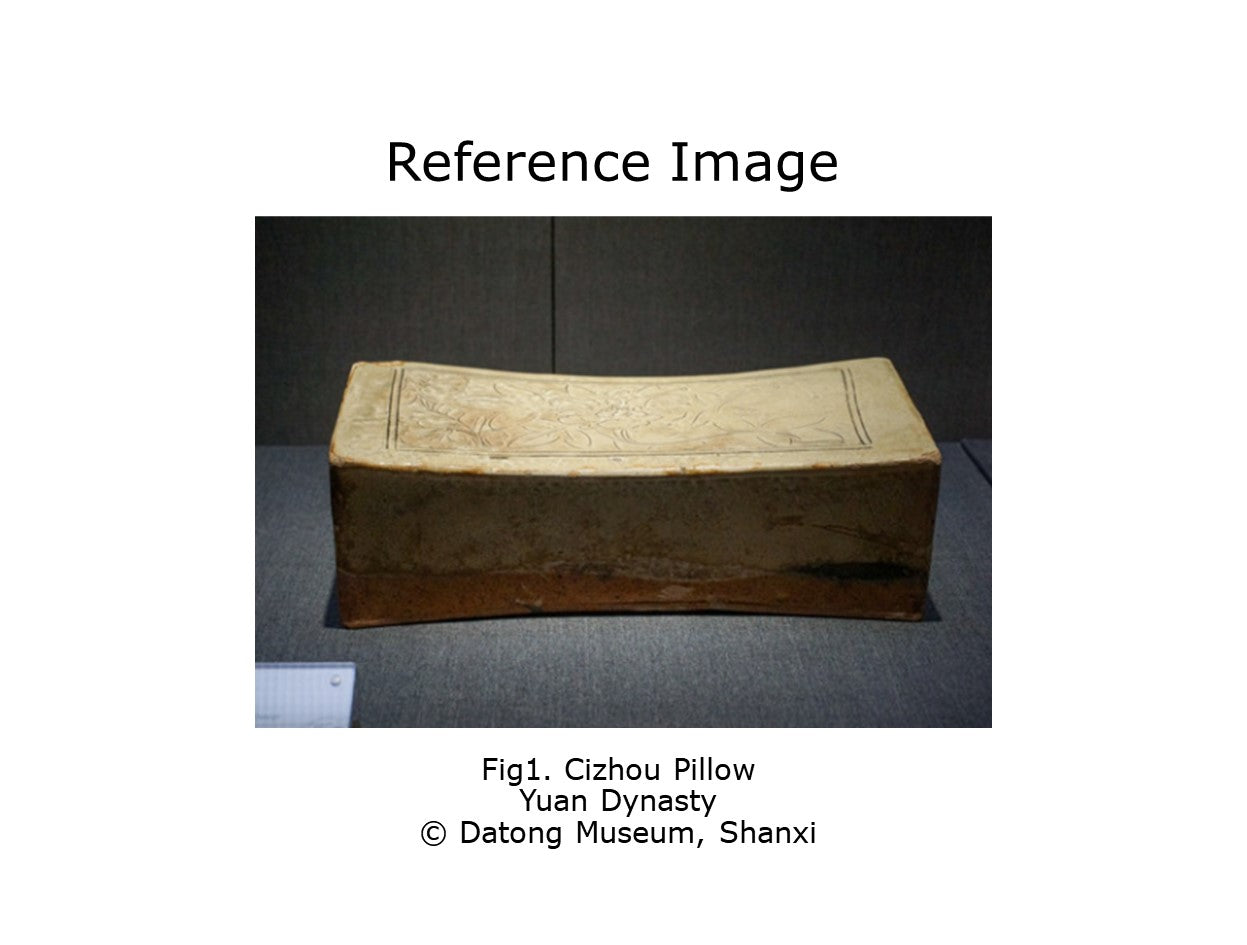Cizhou Rectangular Pillow with Carved Decoration, Yuan Dynasty
Cizhou Rectangular Pillow with Carved Decoration, Yuan Dynasty
Couldn't load pickup availability
Cizhou ware is known for its robust forms and freely applied decoration, often featuring a white slip under clear glaze. The pillow is rectangular, with a slightly curved top surface to accommodate the head of the sleeper. The decoration on this pillow features an incised design, delineated with fine lines to create a clear and simplistic representation. The motif includes floral elements, likely peony or chrysanthemum, and foliage, which were popular during the Song and Yuan periods. The carving is subtle yet skillful, showing the artistry and aesthetic preferences of the era.
Period : Yuan Dynasty, 13th-14th CenturyType : Pillow
Medium : Cizhou Ware
Size : 32 cm(Width), 16cm(Depth), 12cm(Height)
Provenance : Acquired in late 1990s from Hongkong
Condition : Good (There is a dent in the upper right corner.)
Reference :
1) Datong Museum - Cizhou Pillow Collection
https://www.huitu.com/photo/show/20180507/012230795140.html
2) Sanmenxia City Museum - Cizhou Pillow Collection
https://m.fx361.com/news/2019/0622/5232179.html
* Cizhou Ware
Cizhou stoneware is recognized for its diverse range of hardness and is commonly found in shades of grey or buff. These pieces are often adorned with decorations such as paintings, incisions, or carvings, applied over a layer of clay slip. Originating from the Cizhou region in Hebei Province, their production was not limited to this area; it spread across various provinces in China during the Song, Yuan, and Ming dynasties, with major manufacturing hubs located in the northern provinces of Hebei, Henan, and Shanxi.
Cizhou ware enjoyed widespread popularity, catering to an affluent merchant class during a time when the tea houses of the capital were adorned with the works of renowned painters. Although this type of pottery didn't seem to catch the attention of Chinese collectors in the 18th and 19th centuries, it was highly valued by the Japanese, who appreciated its folk art charm and rustic appearance. Today, Cizhou pieces command impressive prices at auction.
Over the last fifty years, archaeologists have identified and excavated kilns where Cizhou wares were produced, enabling a clearer understanding of the ware's origins and the evolution of its styles.
The potters of the Song dynasty employed various decoration techniques for their Cizhou creations, including vases, jars, pots, boxes, and pillows. One such method, Champleve, emerged in Henan at the onset of the Song period, particularly in Dengfengxian and Xiuwu. This involved coating the ceramic with a white slip, then carving or incising the design to reveal the darker body beneath before glazing. The resultant contrast between the brown body and the glazed surface was striking. Occasionally, designs were set against a background of small circles stamped with a metal or bamboo tool, a decorative style also common in Tang metalwork. An 11th-century variation involved incising these small circles through the slip and filling them with a brick-red pigment before glazing items like pillows or cups. Sgraffito was another technique where two different colored slips were layered—brown over white or vice versa—and designs were created by scratching away the top layer before applying a transparent glaze to finish the piece.


























